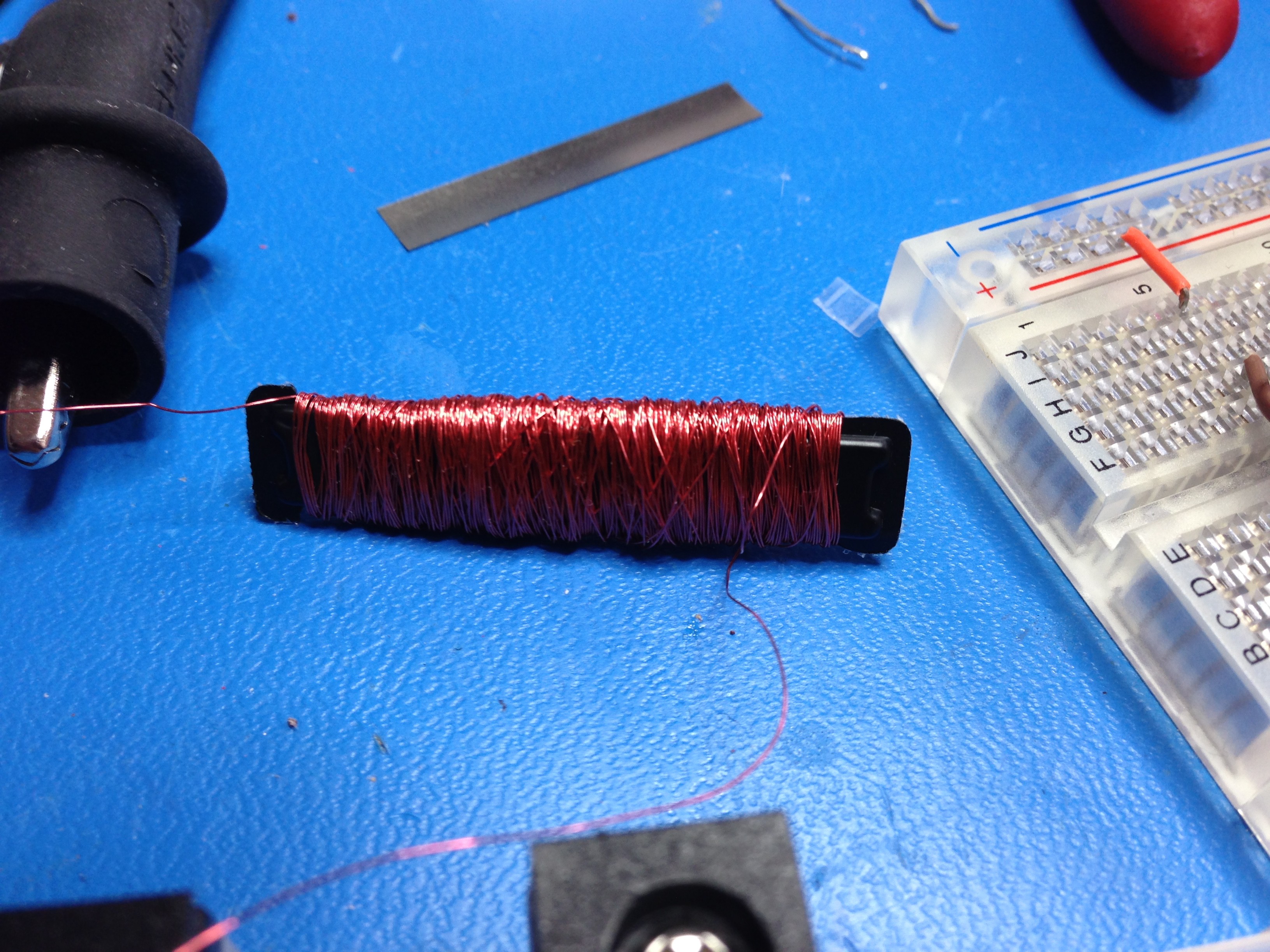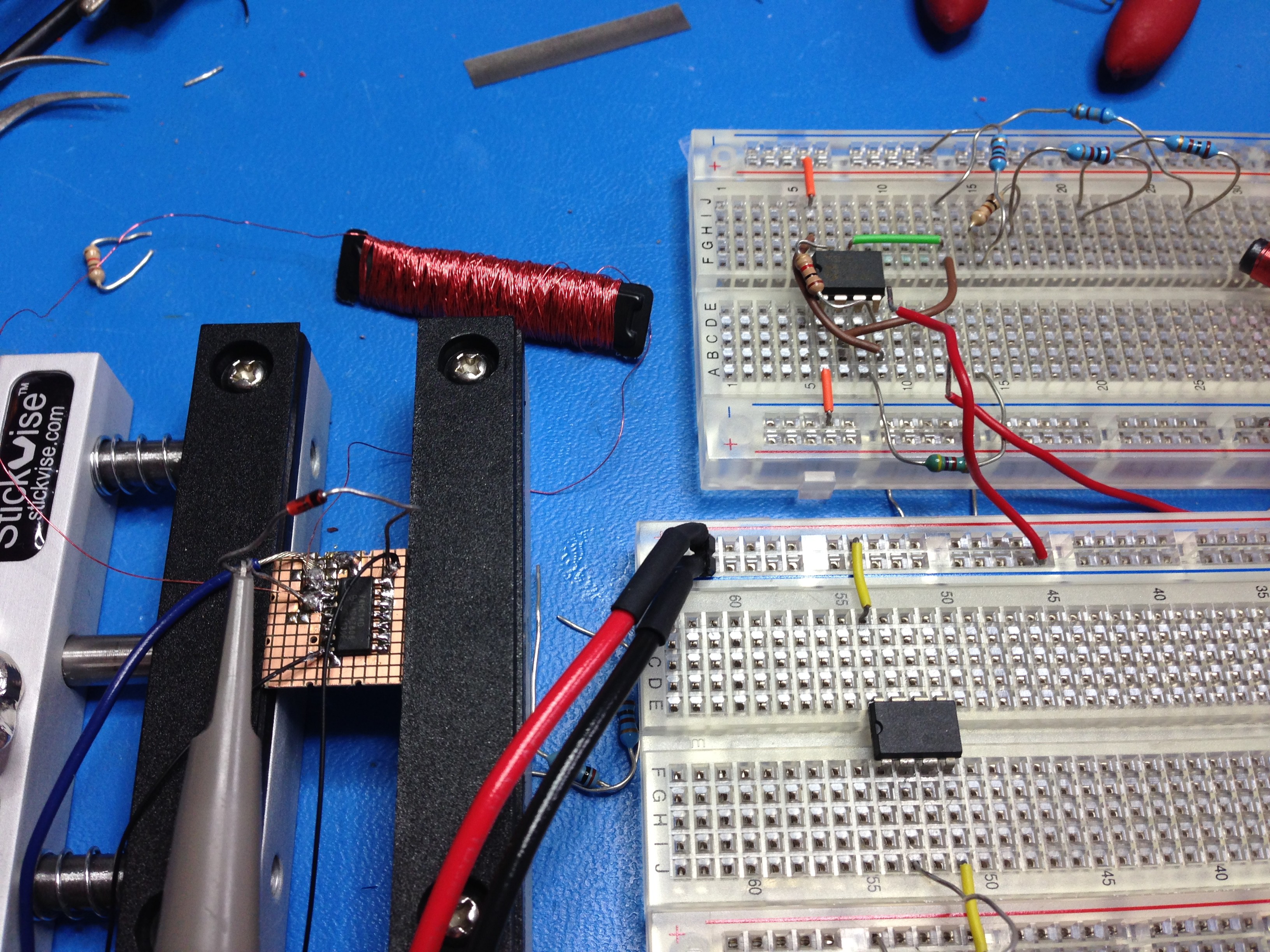
Saturday: Further research into the cores for magnetometers has highlighted that the correct core is very important to detecting the earths magnetic field, "metglas" or something similar with high permeability is required.
Um, don't have any, or do I ? Metglas is found in the tags in library books, however I doubt the local library will donate any, but there is something nearly as good in these types of security tags (top rectangular tag):
Remember seeing those sometimes in DVD I buy at Costco. Looking through my collection I've found a black one inside a DVD. The best thing is it's free (excluding the DVD). I won't trash them in future when I find them on stuff.
Removed the top bias strip (attached to the sticky tape) from the tag to obtain the core strip (actually have 2 in there). Removed one and wrapped 500 turns of approx 35 gauge around, not being to fussy about layout (apparently the most important thing is that wrap direction doesn't change when wrapping, otherwise neatness doesn't matter too much).
This is a single wrap, so is tested with the Magentoinductive oscillation technique. Tried 3 different oscillators based on the following oscillation techniques with this coil:
555 Timer: Works well, detects a regular ring magnet about 3 feet away on the scope. Voltage sensitive and temperature sensitive. The 0.005% / C thermal stability of a 555 is too poor for this use, so would need to be temperature compensated. Voltage sensitivity can be solved with double regulation. Also, a little difficult to tune due to the nature of the 555. Otherwise preliminary results suggest it would do the job. Oscillation range can be easily tuned for the best coil saturation. Part count is low and cheap.
OP Amp: Couldn't get to oscillate reliably, tried 2 x ST UA741, and an LM358N. Suspect inductance is the issue and that the coil needs to have more inductance for this to work. Given this, it's likely to be problematic, so abandoning this branch.
Schmidt Trigger Inverter: Same sensitivity as the 555, but oscillation isn't too clean and varies significantly in amplitude and noise which makes it through to the output due to the back emf on the coil despite putting a shunt diode in. Still, would likely be a very simple / cheap solution for a mid range precision compass.
Now the principle is proven to work, it's time to wind better quality coils on 3D printed forms for face off testing for the 2 techniques :
1. Dual parallel wound around a security tag strip (suitable for Fluxgate Technique)
2. Single wound around a security tag strip (2000 turns) - (suitable for Magnetoinductive Technique)
3. A conventional fluxgate design consisting of one of the mystery toroids for the drive and a slip over form for the sense winding, that can be used to test a few different mystery cores.

Discussions
Become a Hackaday.io Member
Create an account to leave a comment. Already have an account? Log In.